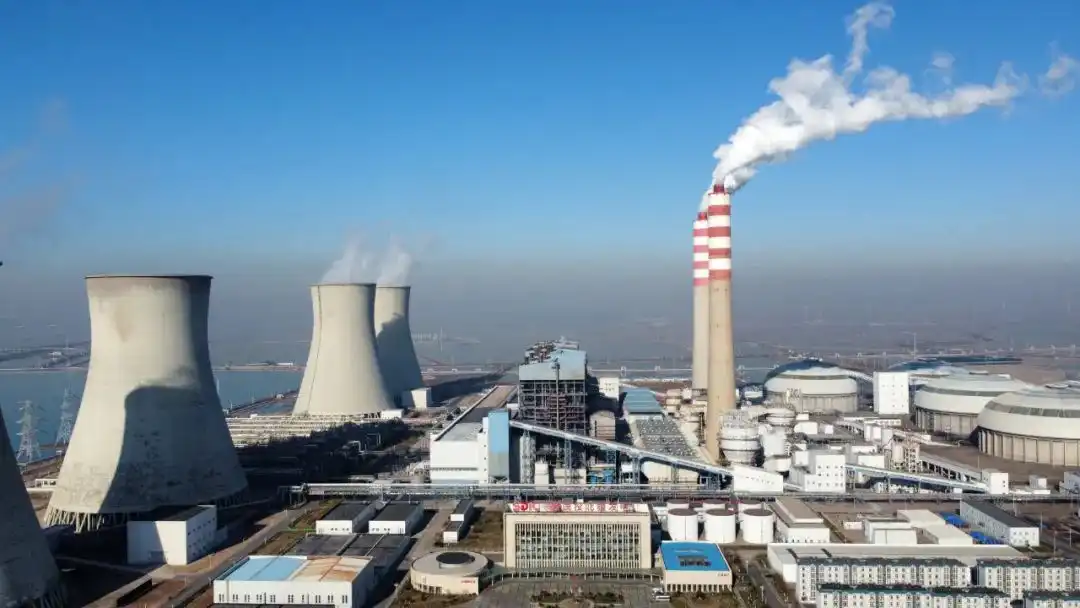Adding ammonia to thermal power:A new path to promote the construction of low-carbon power plants
As the global energy green and low-carbon transformation accelerates, coal power is facing unprecedented challenges. When deploying key tasks for 2024, the National Energy Work Conference proposed to study and explore the technology of blending hydrogen and ammonia with thermal power to promote the construction of a number of "low-carbon power plants." This provides a practical and new path for energy-saving, emission reduction and green development of coal-fired power plants.
Due to factors such as economy and resource endowment, China's power structure is dominated by coal power. While coal power supports rapid economic development, it also brings serious environmental problems. About 40% of China's annual carbon emissions of about 10 billion tons come from coal power. To achieve the goal of carbon neutrality, on the one hand, we must reduce the use of coal power and vigorously develop cleaner renewable energy; on the other hand, we must improve the level of clean utilization of traditional fossil energy such as coal.

SDIC Beijiang Power Plant. Photo by Li Ran (Xinhua Agency)
In recent years, we have done a lot of work around the clean and efficient transformation of coal and electricity. Through the continuous implementation of the "three reforms linkage", more than 80% of coal-fired power units across the country have undergone energy-saving renovations, more than 90% of coal-fired power units have achieved ultra-low emissions, and nearly 300 million kilowatts of coal-fired power units have been flexibly renovated on demand. With the help of technological progress, China's average electricity coal consumption has dropped from nearly 400 grams per kilowatt hour 20 years ago to about 300 grams per kilowatt hour today, which is better than the level of the United States and Germany. In addition, based on the development and application of technologies such as secondary reheat, high-level layout, ultra-clean emissions, and CCUS (Carbon Capture, Utilization and Storage), we are also exploring more possibilities for clean development of coal power.
在当前技术条件和装机结构下,煤电仍是最经济可行、安全可靠的灵活调节资源,可在提升电力保供能力的同时,促进可再生能源发展。因此,我们需要更加高效的清洁利用方式, Further significantly reduce coal consumption in thermal power generation and reduce carbon emissions while ensuring the development of a certain amount of thermal power.
The advancement of the technology of blending hydrogen and ammonia in thermal power has made people see this hope. 目前全世界已知能高温燃烧的燃料绝大部分都是化石能源,真正不含碳并具备实用性的清洁燃料极少,其中就包括氢和氨。氢作为下一代能源备受关注,但气态的氢气难以大量长距离运输,且热值偏低,在当前技术下直接大规模利用存在困难。过渡性解决办法是利用绿氢合成绿氨,氨目前主要用于化肥,液氨储运技术和安全规范也非常成熟。研究发现,在燃煤火力发电领域应用氨混烧时,基本不需要改变现有主体设备,仅需在锅炉单元改造添加一些支持氨燃烧的装置,即可达到碳减排效果。
Some countries have long had plans for the technology of blending hydrogen and ammonia with thermal power. In 2021, the Japanese government released the sixth edition of its energy strategic plan, which clearly prioritizes the promotion of hydrogen and ammonia mixed-burning power generation technology, hoping to achieve lower-cost carbon neutrality in the form of "ammonia-hydrogen" energy; South Korea has established a hydrogen-ammonia power generation demonstration and promotion leading group, the goal is also to promote the mixed combustion of hydrogen, ammonia, natural gas, and coal to generate electricity. China has significant advantages in renewable energy. If it can establish a raw material supply and technical standard system for thermal power blended combustion of hydrogen and ammonia as soon as possible and achieve large-scale application, it will be expected to lead the global hydrogen and ammonia fuel market.
In order to achieve net-zero emissions from thermal power generation, China is actively exploring the technology of blending hydrogen and ammonia in thermal power, and relevant demonstration projects and technology development continue to advance. 2023年4月,由合肥综合性国家科学中心能源研究院与皖能集团联合研发的燃煤电厂大比例、长时间、高稳定性掺氨燃烧降碳技术,在现役30万千瓦火电机组试验取得成功。同年年底,中国神华广东台山电厂60万千瓦煤电机组成功实施高负荷发电工况下煤炭掺氨燃烧试验,成为国内外完成掺氨燃烧试验验证的最大容量机组。
虽然火电掺烧氢氨路线在技术方面已得到验证,However, large-scale promotion still faces two major challenges :一是大规模绿氨来源问题。绿氨主要指利用绿电制取的氢所生产的氨,其生产过程不排放二氧化碳。目前,中国合成氨多来源于煤和天然气,减碳效果有限,而绿氨产量极低,想足量采购并非易事。二是绿氨采购成本远高于煤炭。合成氨70%至80%的成本来自氢,要想合成廉价绿氨,必须要有廉价绿氢,但大幅降低绿氢制备成本存在挑战。
由于与许多电厂用煤热值相当,每燃烧1吨氨就可以减少1吨煤炭消耗,火电掺烧氢氨是不可多得的化石能源源头减碳技术。 In order to achieve large-scale utilization of this technology, policy support should be provided for on-site hydrogen production projects from renewable energy, increase the manufacturing rate of equipment in China, and continue to reduce the cost of green hydrogen preparation. At the same time, resources and financial support will be provided to thermal power plants that have applied this technology earlier. 值得期许的是,目前在风光资源较好的地区,制氢成本与天然气制氢接近,合成平价绿氨已看到希望,真正的“低碳电厂”也许离我们并不遥远。
